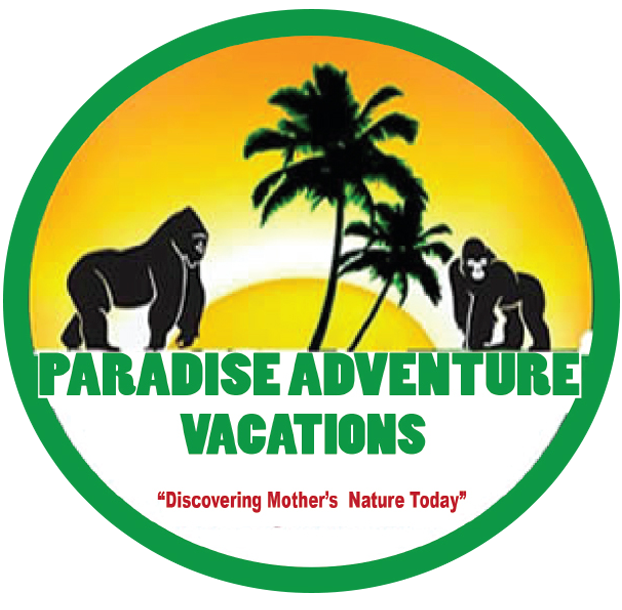- Home
- Uganda Safaris
- Gorilla Trekking Safaris
- 45 Days Best Uganda Safari Adventure
- 25 Days Great Apes of Uganda Safari
- 21 Days Wildlife Trip Exploring Uganda
- 20 Days Uganda Classic Safari Tours
- 16 Days Uganda Safari Adventure Tour
- 15 Days Safari in Uganda & Adventure
- 14 Days Uganda & Kenya Wildlife Safari
- 14 Days Uganda Gorilla & Chimpanzee
- 12 Days Safari Holiday Uganda Gorilla
- 11 Days Uganda Safari Classic Tour
- 10 Days Uganda Safari Tour & Holiday
- 9 Days Uganda Safari Adventure
- Wildlife Safaris
- 7 Days Wildlife Primates & Gorilla Safari
- 7 Days Uganda Gorilla Trekking Safari
- 6 Days Gorilla & Chimpanzee Trekking
- 5 Days Gorilla Chimpanzee Tracking
- 5 Days Gorilla White Water Rafting Safari
- 5 Days Uganda Chimpanzee Tracking
- 3 Days Gorilla Habituation Safari Tour
- 3 Days Gorilla Trekking Tour
- 3 Days Queen Elizabeth Wildlife Safari
- 3 Days Murchison Falls Safari Uganda
- 3 Days Uganda Safari to Sipi Falls
- Bird Watching Safaris
- 32 Days Best of Uganda birding Safari
- 26 Days Best of Uganda Birding Safari
- 25 Days Best Of Uganda Birding Tour
- 23 Days Uganda Birding Tour Adventure
- 20 Days Uganda Birding Photography
- 18 Days Birding Tour & Gorilla Tracking
- 17 Days Uganda Birding Safari
- 15 Days Uganda Birding Safari
- 10 Days Mountain Rwenzori Trekking
- 9 Days Birding Uganda Tour
- 8 Days Uganda Safari Primates
- Gorilla Trekking Safaris
- Rwanda Safaris
- Kenya Safaris
- Short Safari Tours
- 8 Days Kenya Safari to Amboseli
- 7 Days Best Kenya Safari Tour
- 7 Days Safari Kenya Maasai Mara
- 6 Days Amboseli, Lake Naivasha Tour
- 6 Days Masai Mara Nakuru Amboseli
- 5 Days Amboseli, Lake Naivasha
- 5 Days Amboseli and Tsavo West
- 5 Days Masai Mara & Lake Nakuru
- 4 Days Lake Nakuru and Maasai Mara
- 4 Days Tsavo East and Tsavo West
- 3 Days Maasai Mara Wildebeest
- 3 Days Safari to Amboseli National Park
- Long Safari Tours
- 15 Days Uganda Kenya Tanzania Safari
- 14 Days Uganda & Kenya Wildlife Safari
- 12 Days Magic African Kenya Safari Tour
- 11 Days Rwanda Gorillas, Kenya Tour
- 11 Days Spirit and Soul of Africa
- 9 Days Big Kenya Safari Vacation
- 9 Days Safari Masai Mara & Zanzibar
- 7 Days Safari in Kenya Adventure Tour
- 6 Days Kenya and Tanzania Tour
- 5 Days Kenya Safari Tours from Nairobi
- 5 Days Mara & Lake Nakuru
- Kenya Luxury Safaris
- 10 Days Luxury Kenya & Tanzania Safari
- 4 Days fly-in Masai Mara Safari
- 9 Days Luxury Big Kenya Safari
- 6 Days Amboseli, Lake Naivasha Luxury
- 4 Days Taste of Kenya Luxury Tour
- 4 Days Fly-in Masai Mara Safari
- 6 Days Fly-in Great Wildebeest Migration
- 3 Days Fly-in Safari Masai Mara
- 5 Days Kenya Luxury safari Tour
- 5 Days Amboseli and Tsavo West Luxury
- 5 Days Kenya Luxury safari Holiday
- Short Safari Tours
- Tanzania Safaris
- Short Safari Tours
- 6 Days Luxury Safari Tarangire Tour
- 6 Days Tanzania Safari Tours
- 6 Days African Safari Tour Kenya
- 6 Days Ngorongoro and Serengeti Tour
- 5 Days Tanzania Safari Migration
- 4 Days The Magical of Tanzania Safari
- 4 Days Serengeti and Ngorongoro Crater
- 4 Days Luxury Safari Tanzania
- 4 Days The Magical of Tanzania Safari
- 3 Days Serengeti National Park Holiday
- Long Safari Tours
- 15 Days Uganda Kenya Tanzania Safari
- 11 Days Tanzania Wildlife Safari & Zanzibar
- 10 Days Safari & Cultural Kilimanjaro
- 10 Days Migration Serengeti Safari Tour
- 10 Days Best African Tanzania Safari
- 10 Days Best African Tanzania Safari
- 10 Days Migration Serengeti Safari Tour
- 9 Days Tanzania Safari & Day Hike
- 9 Days Tanzania Safari & Day Hike
- 9 Days Kilimanjaro Hiking Safari
- 8 Days Honeymoon Package Tanzania
- 8 Days Tanzania Safari Holiday
- Tanzania Luxury Safaris
- 10 Days Luxury Kenya & Tanzania Safari
- 9 Day Luxury Big Kenya Safari
- 8 Days Tanzania Safari & Beach Holiday
- 8 Days Wonders of Kenya & Tanzania
- 8 Days Tanzania Luxury Safari Holiday
- 8 Days Luxurious Tanzania Safari
- 7 Days Tanzania Honeymoon Holiday
- 7 Days Tanzania Honeymoon Safari
- 7 Days Serengeti Mara River Crossing
- 7 Day Tanzania Northern Circuit Luxury
- 7 Days Premium Luxury Tanzania
- 7 Days Tanzania Luxury Premium Safari
- Short Safari Tours
- About Us
- Lodges
- Travel Blog & Tips
